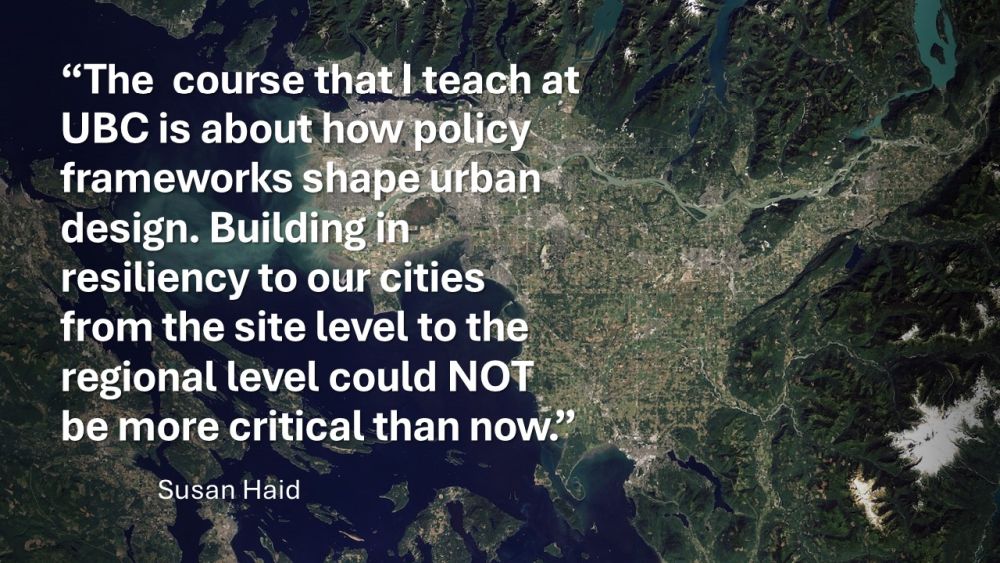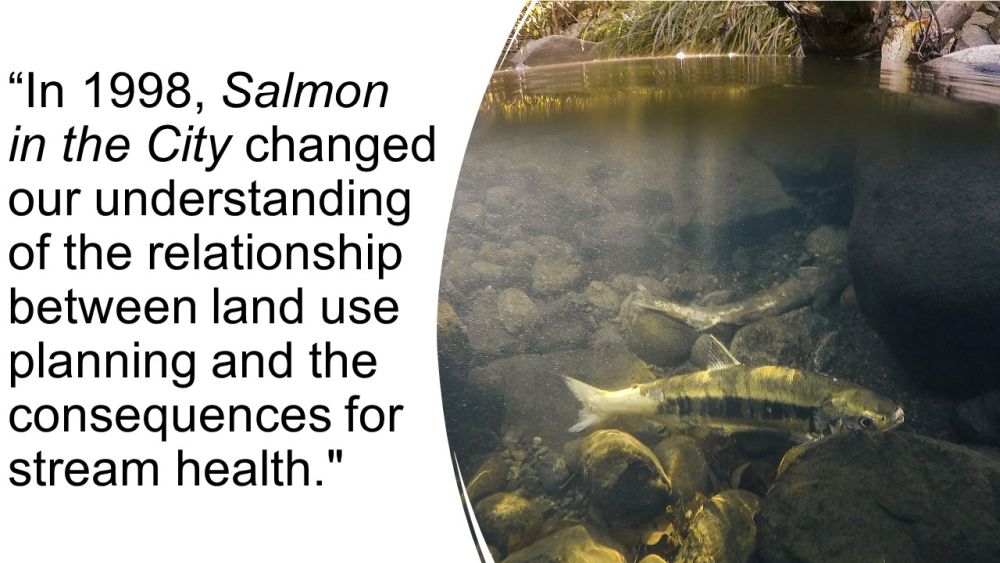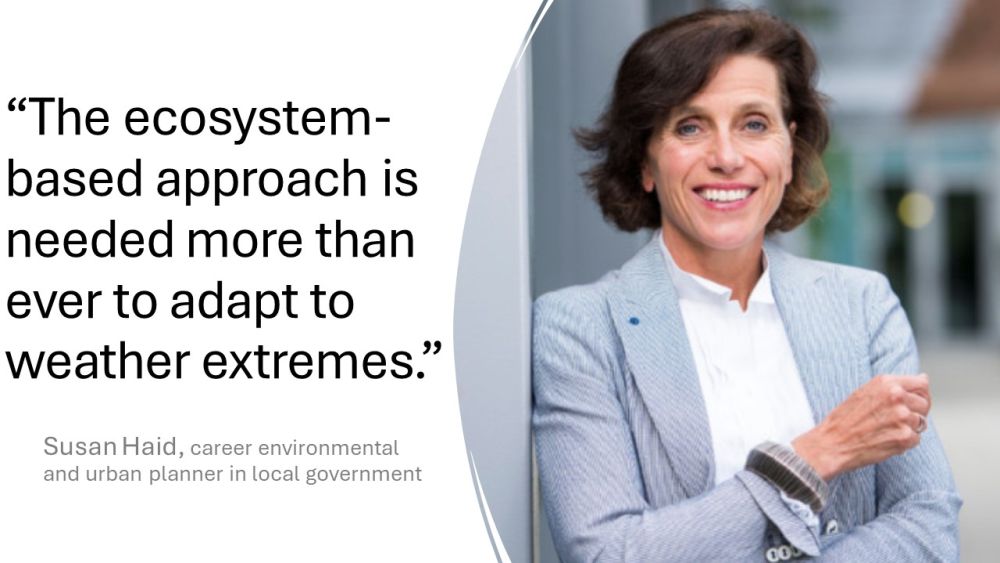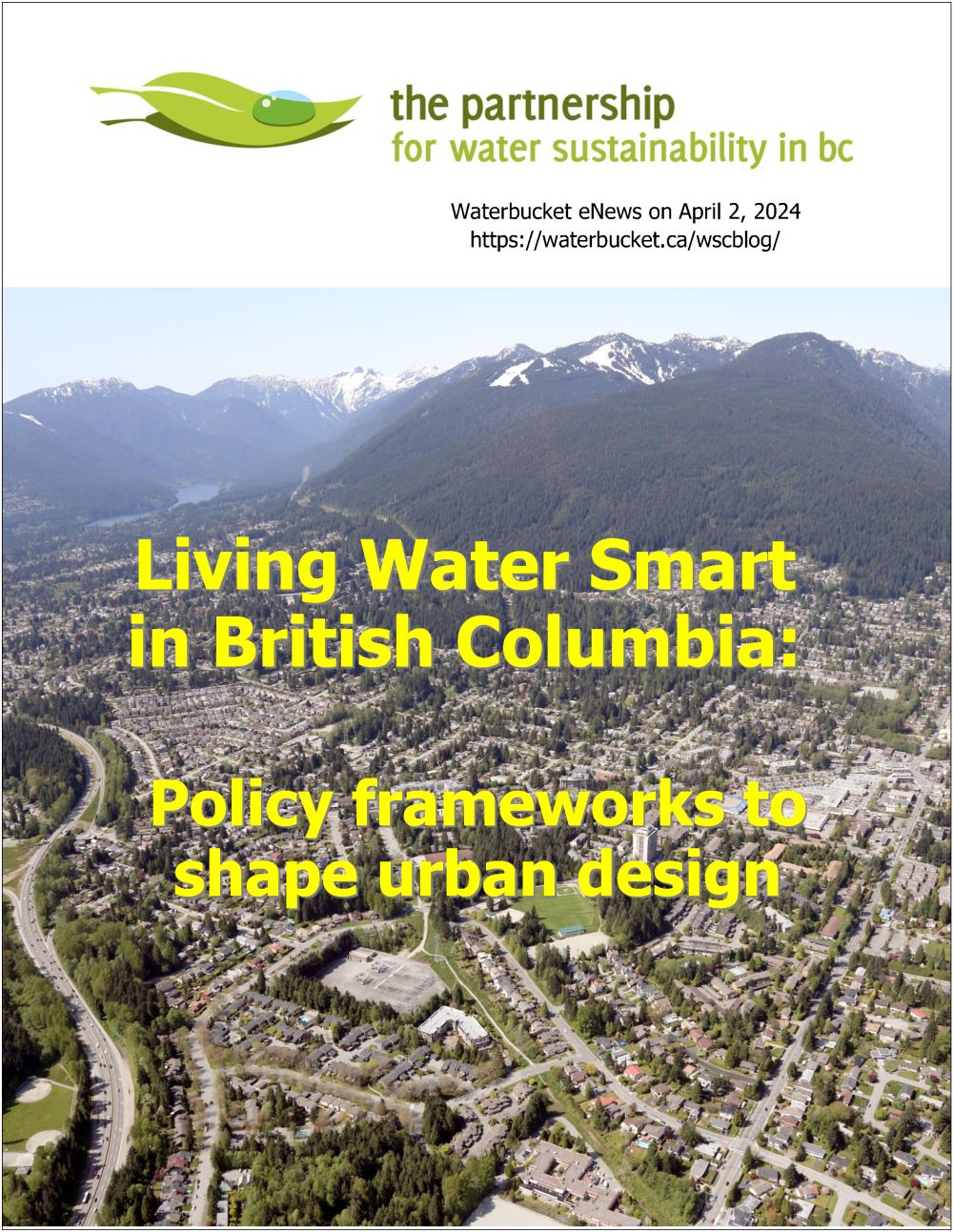PRECEDENT FOR AN ECOSYSTEM-BASED APPROACH TO WATERSHED PLANNING: “Passage of the Fish Protection Act in 1997 spawned an array of initiatives, including the Stormwater Planning Guidebook,” stated Kim Stephens, principal author and project manager
Note to Reader:
Published by the Partnership for Water Sustainability in British Columbia, Waterbucket eNews celebrates the leadership of individuals and organizations who are guided by the Living Water Smart vision. The edition published on April 2, 2024 featured Susan Haid. She has played a leadership role in trailblazing an ecosystem-based approach to community planning in British Columbia. This approach flowed from passage of the Fish Protection Act 1997. Transformational in nature, it spawned an array of initiatives. The need for this approach to land-use planning is ever more important today.

Fish Protection Act spawned an array of initiatives
“BC communities are experiencing the unintended environmental consequences of policy frameworks that have not been well implemented. But despair not. Knowledge and wisdom that would pull us back from the brink are waiting to be rediscovered and mobilized so that communities can change course in time,” stated Kim Stephens, Waterbucket eNews Editor and Partnership Executive Director.
“My conversations with Susan Haid and other thought leaders shed light on ‘dots’ that would inform a mindset change. However, wanting to know what dots to connect would be the prelude to an attitude switch by practitioners and decision makers that triggers a course correction. “Yet this rich history may be largely ignored and/or forgotten. Reconnecting with this experience can help illuminate the current path forward.”

“Passage of the Fish Protection Act 1997 was the culmination of an attitude switch in response to the salmon crisis of the 1990s. Transformational in nature, it spawned the Riparian Areas Protection Regulation (RAPR), Stormwater Planning: A Guidebook for British Columbia, Integrated Stormwater Management Plans (ISMPs), and the Partnership for Water Sustainability.”

Ecosystem-based approach is needed more than ever to adapt to weather extremes
“It is really heartening to observe the recent renewed interest in what I think of as ecosystem-based planning and is now often called green and blue systems in cities,” states Susan Haid.
“It sounds simple, but it is heartening because this has NOT really been a key theme in the public dialogue for some time. The pandemic has reminded us of the importance of green space and access to nature.”
“It is even more important now because in 1997 we did not have the kind of weather extremes such as atmospheric rivers and heat domes we are now regularly experiencing.”
“There is a resurgence of ideas that is influencing policy making!”
“As I reflect on my career in local government, there has been a lot of learning that has raised awareness and driven changes in land planning practice. A defining moment for me was the Salmon in the City Conference in 1998. It was a memorable event.”

SHARPENING THE EDGE: Policy framework for a sustainable and resilient Salish Sea region
“Concepts of mentorship and reflecting real-world examples are things that I really espouse in teaching. But I also find that it is an opportunity for me to learn and to continue growing,” says Susan Haid.
“In many ways, what I am teaching comes back to the same kind of framework around ecosystem-based planning which Erik Karlsen, Kim Stephens. and others were advancing in the 1990s, and which is synonymous with watershed-based planning.”
“Since January 2023, I have been teaching a master level course in urban design policy at UBC. Titled Policy for a Sustainable Region, it is big picture and is about policy frameworks to influence urban design.”
“A lot of it is case studies and reflection. But I also bring in resiliency and ecological frameworks, with lectures on what are the best practices going forward. I call these sessions SHARPENING THE EDGE.”
“By that I mean here are the provincial, regional and local frameworks and what you do at the site level. But then there is sharpening the edge through emergent sustainable development practices and looking at them through a lens of resiliency, equity and reconciliation.”

Making a difference was exciting for all involved
“It was not like it was rocket science. But the fact that it actually came together at a regional scale with partnerships, and across planning and engineering and parks portfolios, was pretty exciting for everyone involved.”
“You really felt like you were making a difference in terms of guiding ecologically functioning development and growth management.”
“Overall, the work that we were all doing at the time had that strong ecological framework aspect to it. And that is what stands out in my mind for the period 1997 through 2005, Seeing how these foundations are being built upon and advanced rekindles my optimism for the future,” concludes Susan Haid.
To Learn More:
To read the complete story, download a copy of Living Water Smart in British Columbia: Policy frameworks to shape urban design.
DOWNLOAD A COPY: https://waterbucket.ca/wcp/wp-content/uploads/sites/6/2024/03/PWSBC_Living-Water-Smart_Susan-Haid_policy-shapes-urban-design_2024.pdf


